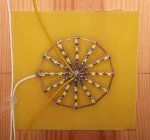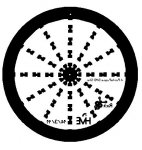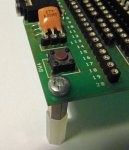Dicky Mint
Senior Member
Hi, I'm trying to use pwm to control the overall brightness of some LEDs. I'm controlling the LEDs through an input pin connected to a microphone and amplifier, via the output pins of a PICAXE-14M2. What I wondered was, can I use pwm to modulate the signal to each output pin, on-top-of as it were, the on off signals going to each of the 6 pins of port B of the PICAXE? I know I'll have to be certain about relative frequencies but a few hints would be well received. I hope that this is not a trivial post but I can't seem to get to the bottom of it on my own, anyway. I'm a bit ashamed of the code but I hope it will work as it seems to simulate well. View attachment Sams Box PICAXE 01.bas
I've got a bit of a problem with the .bas file extension. My computer gets it confused with files used by DeltaCad, a CAD package, so I don't think that my included software file will open on another computer! I will be interested to find out.
I've got a bit of a problem with the .bas file extension. My computer gets it confused with files used by DeltaCad, a CAD package, so I don't think that my included software file will open on another computer! I will be interested to find out.
Last edited:





